CREATE WITH THE
EOS VR SYSTEM
Give your creativity a whole new dimension
with Canon DUAL Lenses
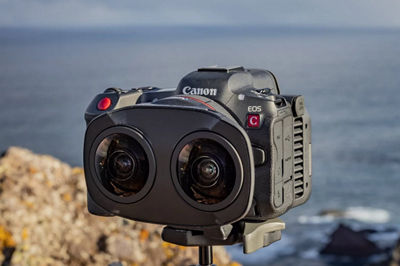
LENS
RF5.2mm F2.8 L DUAL FISHEYE lens
RF-S3.9mm F3.5 STM DUAL FISHEYE lens
RF-S7.8mm F4 STM DUAL lens

CAMERAS
EOS R5 C, EOS R5 Mark II, EOS R5, EOS R6 Mark II, EOS C400, EOS C80, EOS R7 and EOS R50 V
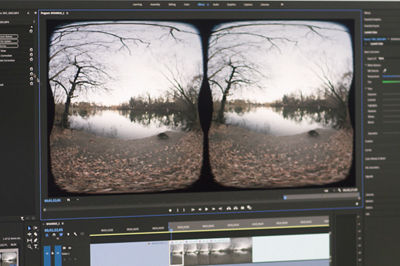
SOFTWARE
Canon’s EOS VR Utility & EOS VR Plug-in for Adobe Premiere Pro
EOS VR SYSTEM OVERVIEW
Canon’s EOS VR System is a three-part system including RF Mount lenses, mirrorless EOS R-series and Cinema EOS cameras with compatible firmware, and powerful EOS VR software for high-image quality, convenience and streamlined workflow efficiency.
Canon's EOS VR System's innovative DUAL lenses natively mount to applicable RF-mount camera bodies immediately transforming your traditional EOS camera into a 3D VR photo and video powerhouse.
For serious creators and professionals, the RF5.2mm F2.8 L DUAL FISHEYE lens creates stereoscopic 3D 180° VR stills and videos supporting up to 8K resolution. The innovative optical design of this lens allows it to simplify the traditional VR stitching process by instead capturing two 190° field of view images to a single full-frame image sensor. It is supported by cameras such as the EOS R5 C, EOS R5 Mark II, EOS R5 and EOS R6 Mark II, as well as the Cinema EOS C400 and C80 cameras.
For those aspiring to become a VR content creator, Canon’s EOS VR System also includes two RF-S mount DUAL lens products the RF-S3.9mm F3.5 STM DUAL FISHEYE and the RF-S7.8mm F4 STM DUAL lens. The two lenses offer VR accessibility to the masses, and support popular APS-C image sensor EOS R-series cameras such as the EOS R7 and EOS R50 V. The RF-S3.9mm F3.5 STM DUAL FISHEYE lens creates an immersive 144° stereoscopic 3D 180° format VR image, while the RF-S7.8mm F4 STM DUAL lens creates a 60° image which can be viewed in stereoscopic 3D 180° format, 3D Theater or in Spatial Video format.
An integral part of the Canon EOS VR System is Canon's subscription-based software solutions — The EOS VR Utility, a standalone software application, and the EOS VR Plug-in for Adobe Premiere Pro. These two applications provide VR Creators and studios with two different workflow experiences with convenient, high-image quality processing of imagery so they can be upload or headset ready.
Shoot VR with Canon's RF5.2mm F2.8 L Dual Fisheye Lens
EXPERIENCE VR VIDEO
FROM THE CANON EOS VR SYSTEM
Enter a new world of creativity with immersive stereoscopic 3D 180° VR video.
HOW TO WATCH IN VR
- On Desktop: Use your cursor to change the perspective of 180° VR video in browser
- In YouTube app on your VR system: Play in desktop browser then resume from history in headset if logged into the same account
- In Meta Quest video app: Choose ‘add to watch list’ or ‘watch later’
* For details, please check your VR headset and app instructions.

Through a Different Lens - 8K 3D 180° VR
“Through a Different Lens” follows a young girl as she encounters the lively characters that inhabit the depths of her imagination. The magical film documents the creative journey through the eyes of our inspiring narrator, who delightfully challenges us to see the world through a new lens."



Finding Zen With Kittens in 180° VR
Immerse yourself in kitty cuteness with this 180° VR guided meditation, captured with the Canon RF5.2mm F2.8 L Dual Fisheye Lens and EOS R5 C. From the creative minds of renowned cat photographer Andrew Marttila (@iamthecatphotographer) and VR experts Keeley Turner and Hugh Hou, this immersive experience is the purrr-fect way to de-stress.


“This Is Bike Life”
Join the Wheelie crew as they cycle through Brooklyn, NY as captured in stereoscopic 3D 180-degree VR, and hear all about what Wheelie Culture truly means to them.
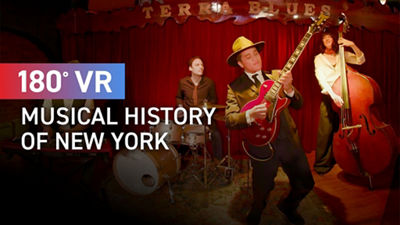

Musical History of New York
Let the power of stereoscopic 3D 180° VR storytelling transport you to three legendary New York City music venues, where the sounds that defined generations thrived. Shot on Canon’s RF5.2mm F2.8 L Dual Fisheye Lens, this immersive VR experience takes you inside The Bitter End, Terra Blues, and Bowery Ballroom.

The image is so sharp, the focus so easy to work with, and it solves so many of the problems creating immersive videos. It's the number one tool in my kit.
A must have.
Matthew Celia | Light Sail VR
THE EOS VR SYSTEM
Three Powerful Lenses for VR and Spatial Storytelling
The RF5.2mm F2.8 L DUAL FISHEYE lens, RF-S3.9mm F3.5 STM DUAL FISHEYE lens, and RF-S7.8mm F4 STM DUAL lens provide VR professionals, enthusiasts and newcomers to VR with a high-image quality trio of Canon DUAL lens options. The imagery from these lenses can create powerful and immersive visual experiences while helping to reach new audiences. See what stereoscopic 3D depth can add to your next photo or video production.
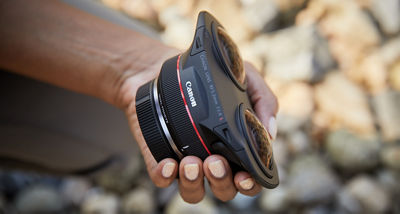
Multiple Cameras with Compatible Firmware
With support from popular EOS R-series camera bodies such as the EOS R5 C, EOS R5 Mark II, EOS R5, EOS R6 Mark II, EOS R7 and EOS R50 V, as well as Cinema EOS C400 and C80 cameras, it has never been easier to begin creating stereoscopic content with Canon.
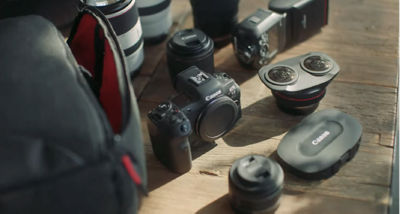
Software Solutions
From remote operation on set using Canon Connect to postproduction assistance using Canon’s EOS VR Utility & EOS VR Plug-in for Adobe Premiere Pro, Canon’s software solutions streamline your EOS VR System experience.
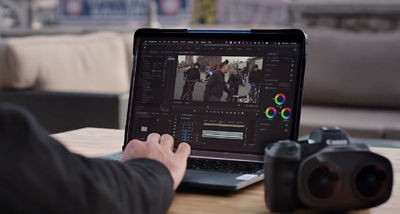

It takes care of all the 3D 180° VR technical details, letting filmmakers like us focus on the art of storytelling. With the EOS R5 C, we can film in 8K 60fps 12-bit - that wasn't possible before.
Hugh Hou
Learn More About the Canon EOS VR System
Ready to create your own immersive content? Click below for detailed product information and answers to your questions about the Canon EOS VR System.
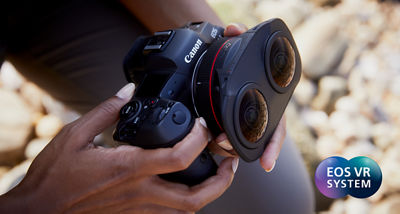
GET THE PRODUCTS
LENS
CAMERAS AND KITS
Would you like more detailed information?
Click below to access the Canon EOS VR System White paper which goes into great detail on compatible cameras, lenses, and software of the EOS VR System.
AWARDS AND RECOGNITION







